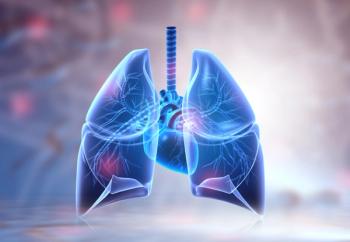
Air Pollution Linked to Detrimental Pregnancy Outcomes, Review Finds
Exacerbation of air pollution and heat exposure related to climate change are significantly associated with serious adverse pregnancy outcomes in the United States, results from a systematic review published in JAMA Network Open show. In response to increasing levels of ozone and particle pollution, 17 attorneys general this week called on the Trump administration to strengthen standards regulating particulate matter pollution.
Exacerbation of
Air pollution has historically been associated with increased rates of adverse health effects including diabetes,
In particular, the associations of climate change with
However, these adverse outcomes have greater consequences on at-risk populations, including a high number of pregnant women and developing fetuses.
In a review of 68 studies encompassing over 32 million births, researchers assessed prenatal exposure to fine particulate matter (PM2.5), ozone, and heat, and their respective associations with preterm birth, low birth weight, and stillbirth. PM2.5 is a common pollutant emitted from vehicles, factories and construction sites, while ozone pollution often results from car, power plant, and refinery use.
Qualifying primary literature was amassed from Cochrane Library, MEDLINE, ClinicalTrials.gov, and other sources. The review included comparative observational cohort and cross-sectional studies with comparators, published between January 2007 and April 2019, in addition to articles found through reference review.
Of the 68 studies (58 on air pollutants and 10 on heat), 57 showed a significant association between air pollutant and heat exposure with birth outcomes. The majority of air pollutant studies (56) analyzed PM2.5, while the remainder included ozone or both. All studies were conducted on US populations.
The analysis revealed:
- Exposure to PM2.5 or ozone was associated with increased risk of preterm birth in 19 of 24 studies (79%) and low birth weight in 25 of 29 studies (86%)
- Positive associations were found across all US geographic regions
- 90% of eligible studies found a significant association between exposure to heat during pregnancy and adverse birth outcomes
- Of 10 studies on the association of racial/ethnic disparities with increased risk of preterm birth among mothers in minority groups, 8 noted higher risk for black mothers, which was the most consistent finding among the subgroups
- Women with asthma were at high risk of adverse birth outcomes
- 8 studies examining whole-pregnancy exposure to PM2.5 found a 2% to 36% increased risk of low birth weight
- 5 studies showed no association between PM2.5 and preterm birth, measuring exposures during the whole pregnancy, by trimester, or by month of birth
The studies conducted across US populations “reported an association of PM2.5, ozone, and heat exposure with the adverse obstetrical outcomes of preterm birth, low birth weight at term, and stillbirth,” authors conclude. Investigations of preterm birth and low birthweight constituted the majority of the studies, while a limited number were included for stillbirth (7) due to the lack of available data. Researchers note the findings are consistent with reviews conducted on non-US populations.
Investigators hypothesize the root of pollution-associated preterm birth may include mechanisms that implicate toxic fine particulates, which include “maternal hematologic transport of inhaled noxious chemicals, the triggering of systemic inflammation, or alterations in function of the autonomic nervous system.”
In addition, direct toxic effects from fetal exposure, altered maternal cardiac or pulmonary function, and systemic inflammation from oxidative stress may result in low birth weight, while alterations in oxygen transport, DNA damage or placental injury may account for stillbirths.
Authors also explain heat exposure may “contribute to prematurity through labor instigation from dehydration (via prostaglandin or oxytocin release), from altered blood viscosity, and/or by leading to inefficient thermoregulation; it may also trigger preterm premature rupture of membranes and thus preterm birth during the warm season."
In response to increasing
Every 5 years, the EPA is required to review NAAQS standards and revise them if existing standards are inadequate. In a comment
“New epidemiological, experimental and risk evaluation evidence demonstrates that significant harm to health occurs beneath the level of the current standards, with particulate matter pollution estimated to cause up to 45,000 deaths a year in areas where long-term PM2.5 concentrations are lower than the current NAAQS,” authors write.
They note that under the Clean Air Act, NAAQS is required to function to protect human health and welfare.
“As a respiratory pandemic sweeps across the country, the Trump Administration’s failure to strengthen these standards is absolutely unacceptable,” said California Attorney General Xavier Becerra. “Lives are at stake. We urge the Trump Administration to do its job, listen to science and abandon this callous proposal.”
Reference
Bekkar B, Pacheco S, Basu R, et al. Association of air pollution and heat exposure with preterm birth, low birth weight, and stillbirth in the US. JAMA Netw Open. 2020;3(6):e208243. doi:10.1001/jamanetworkopen.2020.8243
Newsletter
Stay ahead of policy, cost, and value—subscribe to AJMC for expert insights at the intersection of clinical care and health economics.















































